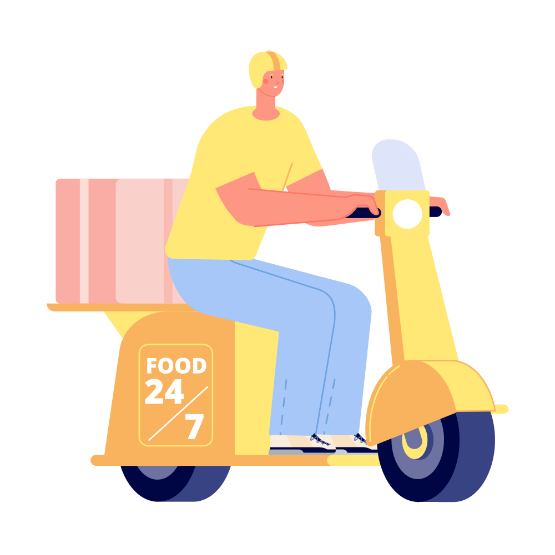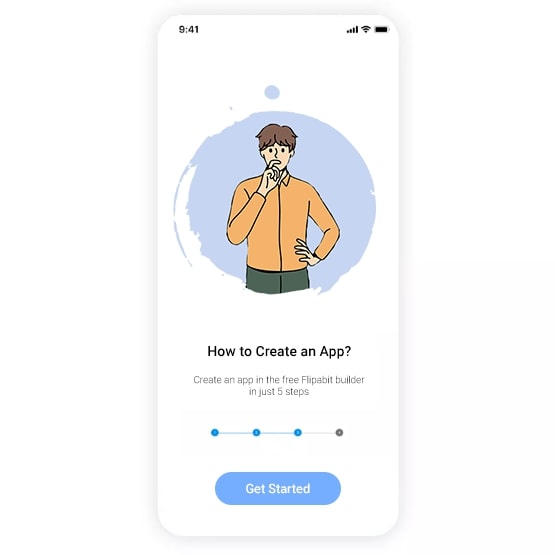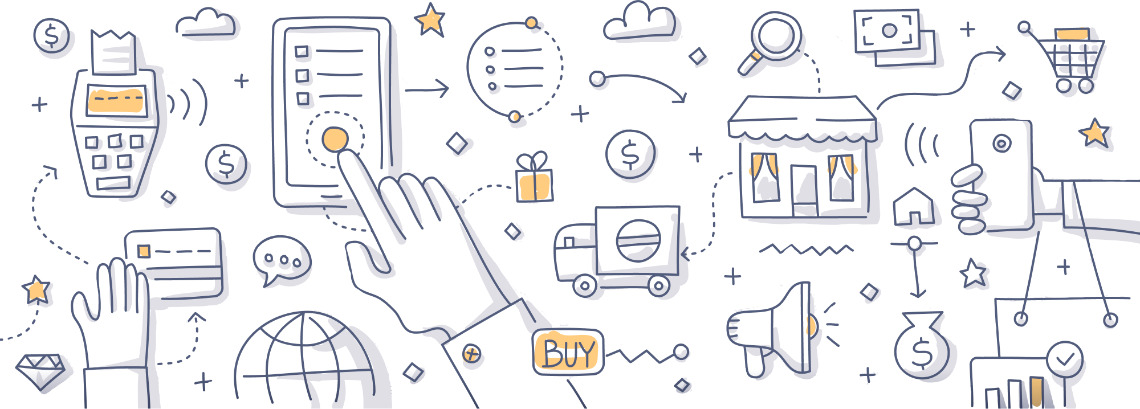Restaurant apps have changed the foodservice industry. They have helped the owners of many establishments strengthen their market presence and more effectively promote their business on the Internet. It’s no wonder the demand for food applications is consistently high.


Create a restaurant app for Android or IOS with the Flipabit following these steps:
First, you need to figure out what type of application best fits your idea. That will help you determine your target audience and competitors, as well as offer your users the necessary functionality.
Users can look up a specific restaurant and see reviews about it, or leave a review of their own for a place they recently visited.
The most popular type of app. Incredibly time-saving. Users can look at the menu, choose what they want, place an order when they’re ready, and track the delivery.
This type of application is perfect for when a user knows exactly what they want to order and from where. Functionality is the same as for most other restaurant apps, only it’s just meant for one particular chain.
This is a catalog of nearby establishments based on the user's location. These types of applications allow you to get directions to the business, view photos of the interior, and familiarize yourself with the menu.
Loyalty programs are great for retaining old customers as well as attracting new ones, especially if the restaurant offers more perks than their competitors. These apps let you set individual rewards and notify customers about promotions and special offers.
These apps let you book a table at a restaurant, order food in advance so that it’s ready when you get there, and pay your bill.
These give you access to a restaurant’s menu so you can decide your orders before you even arrive.
Allows you to pick your meal ahead of time. Aside from prices and descriptions, a high-quality interactive menu will have photos of the items, the ability to add to favorites, taste preference filters, and banners with recommendations.
Time is our most valuable resource, so the ability to pre-order or get food delivered to your door will help you avoid wasting it by skipping the lines at restaurants.
Integrating reviews and a rating system adds transparency to the restaurant scene and simplifies the user’s search for where to eat. Reviews also help restaurant owners respond to mistakes and service errors.
Notifications let you know when your order has been started and when it’s worth waiting for a delivery driver. You can be notified of your favorite restaurant’s new menu items, promotions, discounts, and available promotional codes.
A map-based search feature lets users quickly find the nearest coffee shop or restaurant.
Users can reserve tables at any time of day. For maximum convenience, add a calendar and working hours.
Allows you to filter restaurants by cuisine type, for example, Italian or Mexican cuisine.
Make the delivery process transparent so that the user has peace-of-mind and can know when to expect the delivery person.
One-click ordering based on previous or most recent orders.

Without an effective monetization strategy, even the most ambitious food applications will cease to exist in the first month after launch, so make sure you have this part figured out in the development stage.
The app charges a delivery fee if the cafe or restaurant does not have its own delivery service. Delivery costs may vary depending on distance or order amount. Alternatively, you can charge a flat fee, regardless of the order total or distance.
A user places an order through the application, and the app receives a certain percentage of the order amount. The size of the commission usually depends on the size of the order.
Cafes and restaurants will pay to show up in the top search results, which leads to new customers and orders and increases brand awareness.
The food service charges an extra fee for delivery during peak hours. Some apps will limit the delivery radius and menu, which can be expanded for an additional fee.
The app receives prepared meals from what are usually lesser-known, delivery-based restaurants. It then applies its own brand before shipping to the customer.
Competition is growing, but supply still isn’t keeping up with demand. That means you still have plenty of opportunity to build your own successful restaurant application.
Food delivery generated $270,317,000 dollars in sales, in the US alone
Projected market size of $401M by the year 2025
Delivery services prompted 45% of consumers to order food more often.
A restaurant application serves as an intermediary between a hungry user and a food business.
Restaurant apps have changed the industry by allowing a person to enjoy food from outstanding chefs from the comfort of their home. We have given the owners of cafes and restaurants the opportunity to attract new customers, retain old ones, and provide competitive advantages, all while automating their business.
Popular or New Dishes. The ability to view a list of the most popular dishes can greatly simplify the search and selection process when looking for food. This is especially important if the user is placing an order for a large company, family, or other group where each member isn’t making their own choice.
Gift Cards and Coupons. Even the smallest bonuses will attract more customers and convert them into regular ones. 59% of users look for promotional codes before placing an order. Over 70% of US users say that discounts have a key impact on their order, especially during the holiday season.
No Minimum Orders. Customers can order as much or as little as they want, regardless of a minimum order value. This approach can be implemented with a fixed delivery fee, which guarantees that every order can be fulfilled.
Contact Information and Hours of Operation. The client can contact the restaurant directly. This is extremely important for people with specific taste preferences or dietary needs who want to clarify the details of the order.
See how Flipabit can help you create an app you'll love
The Flipabit App Maker lets you build a restaurant app, food ordering service or grocery delivery platform. With features to increase user engagement and powerful monetization tools, it's easy to make a successful food service.